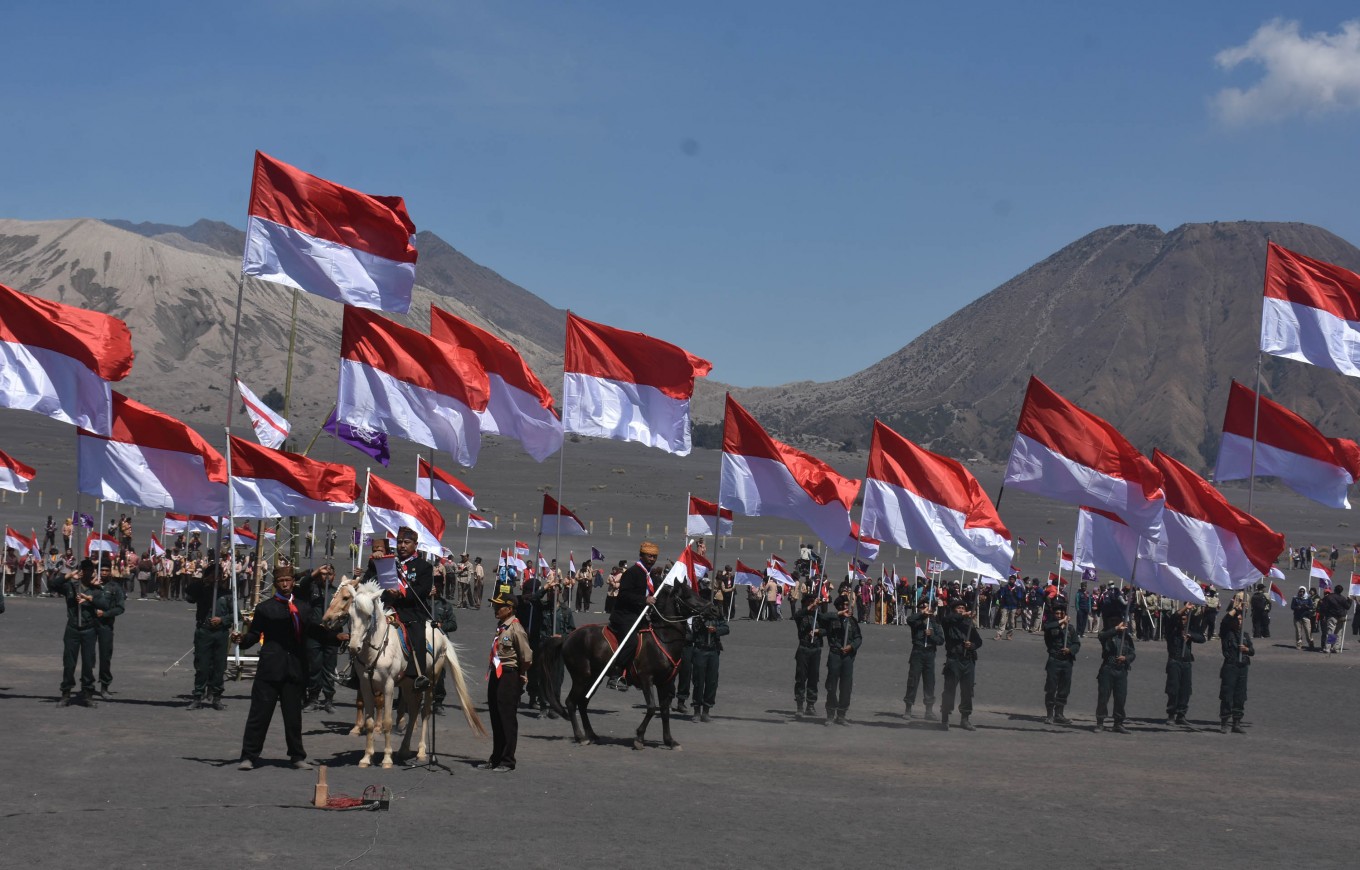Popular Reads
Top Results
Can't find what you're looking for?
View all search resultsPopular Reads
Top Results
Can't find what you're looking for?
View all search results2,018 national flags hoisted on Mount Bromo
Change text size
Gift Premium Articles
to Anyone
I
n the spirit of Indonesia’s 73rd Independence Day, the locals of Probolinggo in East Java erected up to 2,018 of red-and-white national flags at the sandy base of Mount Bromo on Tuesday.
The flags will remain fluttering for four days as a form of Tenggerese people expressing their gratitude for independence from occupation.
The 56-year-old head of Tengger indigenous tribe, Supoyo, said the activity was an initiative by the association of Tengger tribe traditional leaders, which was proposed to the local administration. As a result of the independent hard work and effort of Tenggerese tribes in the 12 villages of the Sukapura district, thousands of flags were hoisted and the event was declared as one of the events of the district’s 57th Scout Commemoration Day.
To attract the attention of a bigger crowd, a flag ceremony was held before raising the flag. It included a ride with the horses, a Glipang Probolinggo dance performance, followed by the presentation of a giant 10-by-25 meter Indonesian flag.
“There was a total of 500 participants comprising the tribe’s representatives, the [Indonesian Military] TNI and [the National Police] Polri, as well as elementary to junior high school students wearing traditional clothing,” Supoyo said.
Read also: Disabled climber to hoist national flag on Mount Elbrus
For the Tenggerese tribe, Supoyo stated that the colors red and white symbolize their traditions and culture. Oftentimes, the colors are also associated with their traditional cuisine. For instance, the color white represents sanctity, peacefulness and harmony. Therefore, food that is inherently white (e.g. coconut milk, apem cake, cassava and bikang crackers) are usually served as ceremonial food or as a complementary ingredient. Red, on the other hand, symbolizes courage, hard work and diligence. The color is typically symbolized by the coconut sugar, a topping that is often present in traditional cake dishes.
Such symbolism is why we find the colors red and white on our plates. They are there when we have a traditional ceremony or a cultural family event. Supoyo went so far to remark that these colors have been in our ancestors' blood even before this country was born.
“This event was made to invite the Tenggerese community, especially the ones from younger generations, to learn the meaning our red-and-white flag has toward our culture and duty for our nation,” he urged.
Sandi, a fifth grader in elementary school, was delighted to have been there. “I was happy and proud to be given the opportunity of raising the red-and-white flag in a different place, like the sandy base of Mount Bromo or at the holy grounds. It was different than the usual, which would be in the schoolyard,” he said.
He appreciates being guided in his journey to reflect on the true meaning of the red-and-white flag. It helps that he could look at it through the lens of his Tenggerese beliefs. (saz/kes)







